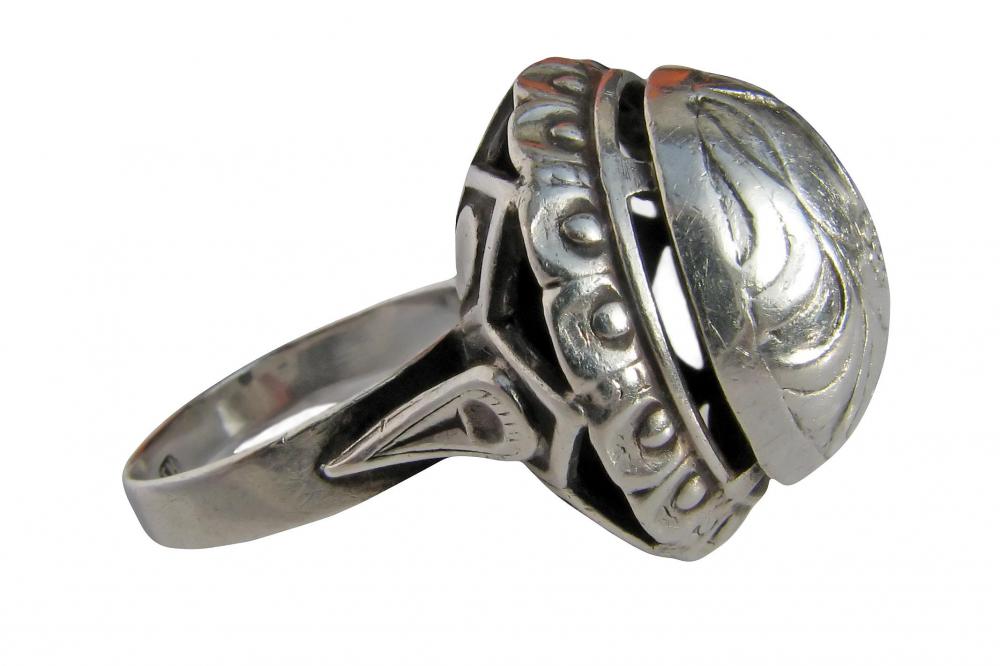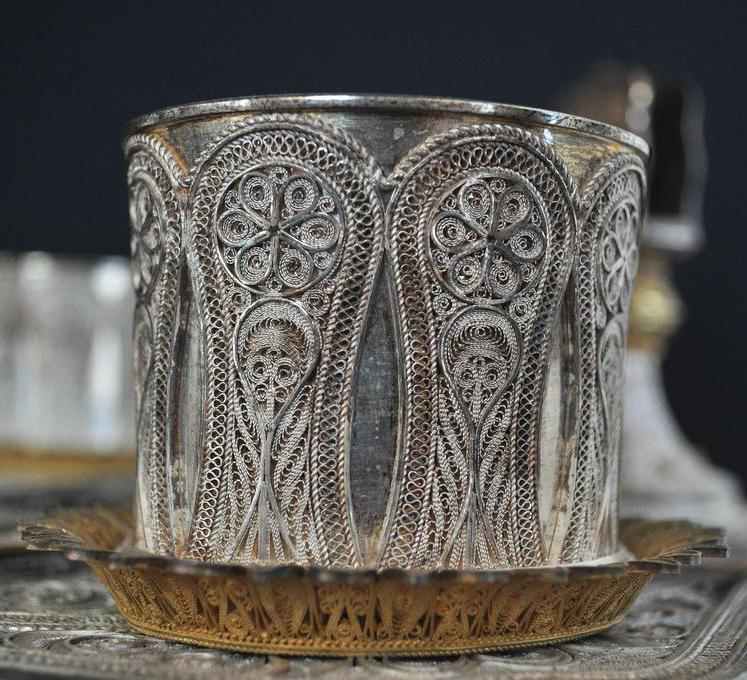At HomeQuestionsAnswered, we're committed to delivering accurate, trustworthy information. Our expert-authored content is rigorously fact-checked and sourced from credible authorities. Discover how we uphold the highest standards in providing you with reliable knowledge.
What is Filigree?
Filigree refers to the process and type of design that uses twisted wire to create delicate, lacy, openwork jewelry. Usually made from finer metals like gold, silver and platinum, filigree has been used for centuries to craft jewelry such as pins, rings and pendants. To create filigree, an artisan rolls the malleable metal into thin filaments, then twists and bends them into intricate shapes that resemble spun sugar, paisley scrolls and evocative arabesques.
Anthropologists have traced the craft of filigree to the jewellers of many different ancient cultures, including Greece, Rome, Armenia, India and China. First, the craftspeople hammered chunks of metal to lengthen and transform them to filaments. Then they joined the wires at their overlapping junctures with rudimentary soldering. This method of producing open patterns was more common at the time than molding or casting metal pieces. The woven threads may have been delicate, but they helped people celebrate rituals during marriages and birth, as well as providing fancy ornamentation for royalty. Antique filigree can be found in museums alongside ancient pottery and carved wood.

During the Edwardian era of the late 19th and early 20th centuries, filigree reached its pinnacle of popularity. Aesthetically, Edwardians valued flowery, ornate designs in clothing, furniture and book illustrations as well as jewelry, so filigree was naturally appealing to them. In America, this school of art and architecture evolved into Art Nouveau. Most antique jewelry of the Art Nouveau style was produced during this era, including diamond engagement rings, detailed brooches set with emeralds or rubies, linked bracelets made from silver, or hanging earrings of gold.

Filigree just as easily adapted itself to the abstracted shapes of the Art Deco period of the thirties and forties, when it appealed to a middle class consumer. Many wedding ring mounts were made of filigree. They showed off geometric motifs and repetitive patterns to reflect the simplification of modern design.
Since the Art Deco era, when the aesthetic of delicate work became widespread in architecture, print, and fashion, filigree has also been used refer to an openwork motif on objects like book covers, lawn furniture, or fabric. Filigreed designs often have vines, leaves, buds, waving hair, or spider webs incorporated into their textures. Historically inspired reproductions of antique pieces may use the word filigree to note the general design, rather than to describe the specific method used to form the jewelry.
AS FEATURED ON:
AS FEATURED ON:













Discussion Comments
I have a ruby filigree ring that has been in my family for generations. While it does have complex designs, they were made of a thicker, sturdier metal than the kind used in other types of jewelry, so it has lasted all these years.
The ruby lies in the center, and it is surrounded by twisted metal that looks like vines with leaves here and there. As a child, I used to stare at it for a long time when my mother and I were having to wait in the doctor’s office. She wore it on her finger everywhere we went, and when she developed arthritis, she quit wearing rings and gave it to me.
I’m not married yet, but when I do become engaged, I would love to have a filigree ring. I think they are the most interesting kind, and I want to be able to sit and admire my own ring the way I did my mother’s ring.
I love those filigree earrings that are made to look like tree leaves. They are so lacy looking, and their fragility is what makes them striking.
Some of these earrings are actual leaves that have been dipped in molten metal, but others are made by hand. The dipped leaves are nearly too fragile to handle, so I bought the sterling filigree earrings.
I have a pair that feature single leaf designs, and I also have a pair that are made of rows of sterling leaves linked together vertically. Each leaf has an intricate design, and a small hoop links it to the next one. They move about as I walk or turn my head, so they always look like falling leaves.
@shell4life - Filigree is definitely stronger than it looks. Don’t be afraid to buy those earrings.
I have a filigree bracelet that I’ve been wearing for ten years, and I have never damaged it. Of course, I take it off before doing yard work or playing with my big dogs, but it can stand up to brushing against my desk or keyboard at work and jostling around on my wrist.
So, as long as you don’t wear filigree while doing tasks that could potentially result in the jewelry getting caught on something or getting hit, it will be fine. I would think that earrings would be the safest choice, because your head likely won’t be coming in contact with things that could damage the filigree.
It seems like filigree jewelry would be too delicate to wear! I know it’s beautiful, but can it hold up to daily use?
It would be terrible to spend money on something like this and have it get bent in no time at all. Is it super easy to warp filigree jewelry, or is it more substantial than it appears?
I’ve been eyeballing a pair of filigree earrings at a store in the mall, but I’ve been afraid to spend $35 dollars on them because of this. Are my worries valid, or are filigree earrings tough enough to handled regular wear?
Post your comments